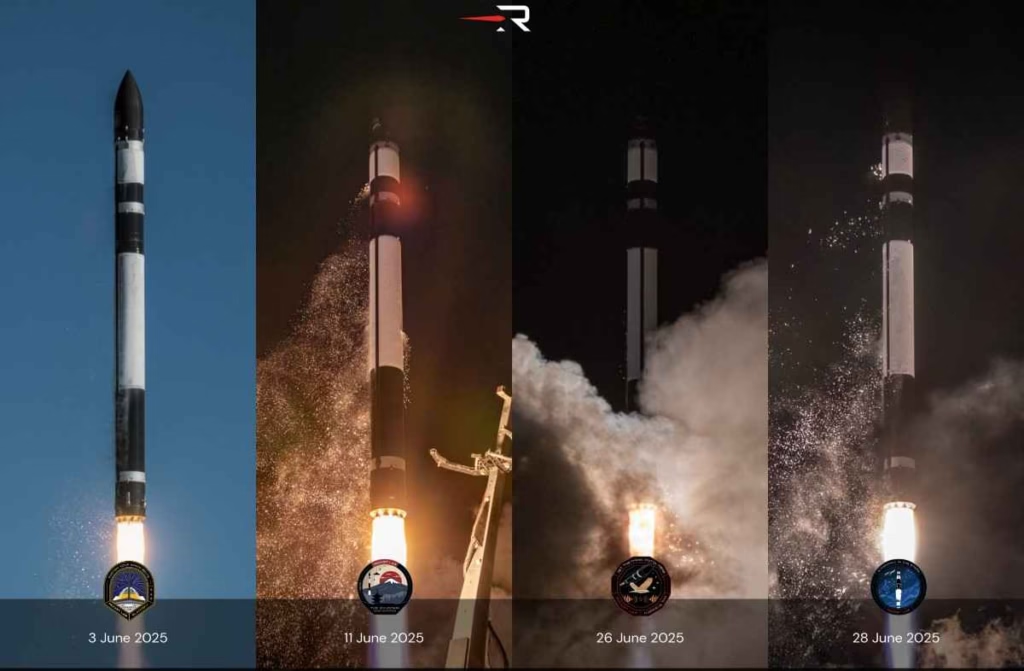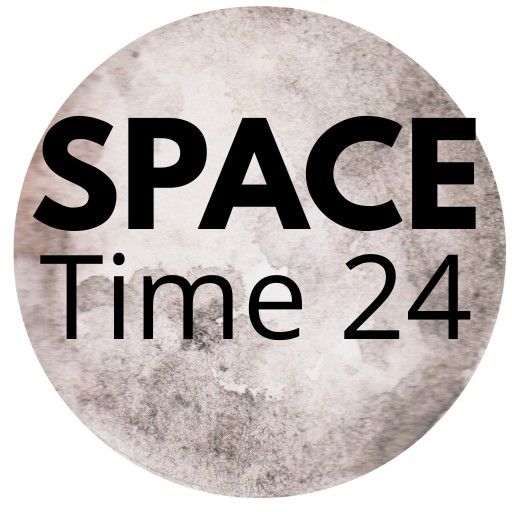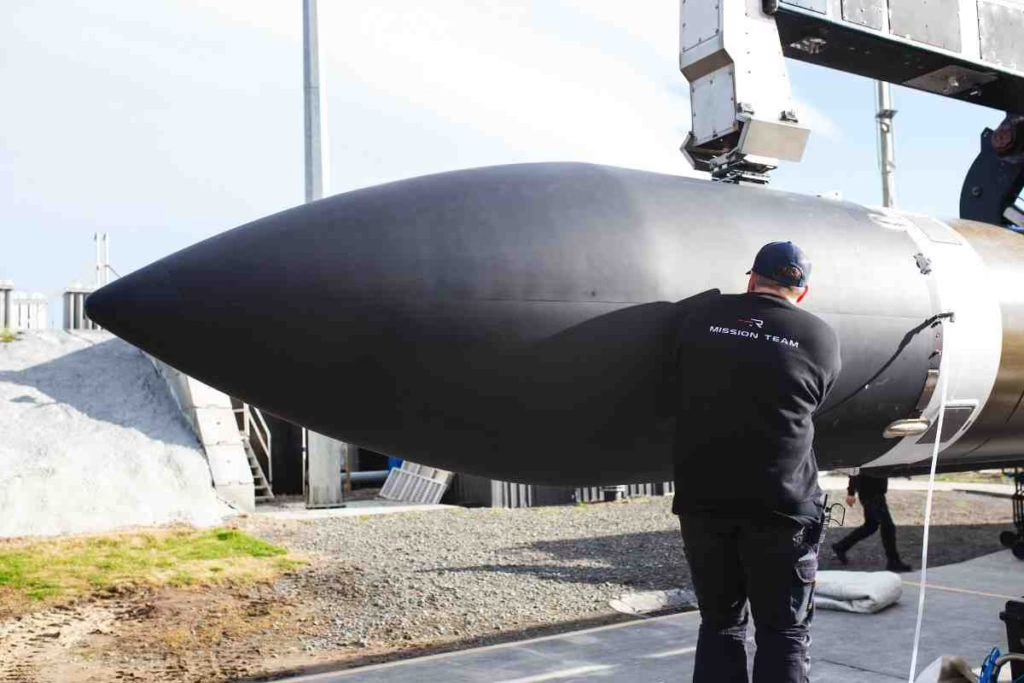Rocket Lab Makes History with completes four Electron missions in June, including ‘Symphony In The Stars,’ marking their fastest pad turnaround and tenth flawless launch of 2025—a record-breaking run in small-satellite deployment.

Rocket Lab Makes History: 10 LEO launching with 100% Successfully
Rocket Lab Makes History and capped off an extraordinary month with the flawless launch of “Symphony In The Stars”, deploying a confidential commercial satellite into Low Earth Orbit. The mission marks a major milestone in the company’s small-launch portfolio and closes out what may be Rocket Lab’s busiest and most successful June ever.
Among the accomplishments Rocket Lab can celebrate are:
- Fastest launch turnaround from their Launch Complex 1
- Four successful Electron missions in June
- Ten successful missions this year—maintaining a 100% mission success rate
In this article, we delve into each of these achievements in detail, review the company’s journey, and explore the broader implications of their rising role in commercial spaceflight.
1. Fastest Launch Turnaround from Launch Complex 1
On “Symphony In The Stars,” Rocket Lab Makes History and showcased the true potential of its rapid-launch ethos. Their launch team turned around Launch Complex 1 (LC-1) on the Māhia Peninsula from pad-ready status to liftoff in record time.
Behind this feat lies a well-oiled operational process that includes streamlined payload integration, agile scheduling, close coordination with government and regulatory agencies, and expertly timed launch rehearsals. The result? Less downtime between missions and far greater launch frequency.
The efficiency demonstrated here aligns with the larger trend in commercial space—where agility and cadence are as important as reliability.
2. Four Electron Missions in June
June proved to be Rocket Lab’s most productive month yet. Alongside “Symphony In The Stars,” the Electron rocket launched three additional missions—each successful and each contributing critical payloads to Earth orbit.
Whether deploying multi-satellite clusters for communications, scientific instruments for climate research, or one-off experimental platforms, each Electron mission reinforced Rocket Lab’s position in the global small-satellite market.
That pace—four launches in a single month—cements Rocket Lab’s role not just as a dependable service, but as a launch provider capable of scaling operations dynamically to meet customer demand.
3. Ten Launches in 2025—Rocket Lab Makes History, A Perfect Success Record
With the successful completion of their tenth Electron mission this year, Rocket Lab Makes History and maintains a remarkable 100% mission success rate. This is no small feat in an industry known for complexity and tight tolerances.
The Electron rocket typically carries payloads weighing between 150 to 300 kilograms, servicing markets like Earth observation, communications, and experimental missions. Ten launches in a single year is ambitious—but with flawless results, Rocket Lab has demonstrated that they can safely and consistently meet the demands of a booming small-satellite sector.
4. The Evolution of Rocket Lab
Rocket Lab Makes History, a journey from a scrappy startup to an industry leader is worth tracing.
4.1 The Early Days
Founded in 2006, Rocket Lab grew steadily before launching its first Electron rocket in 2017—a full decade later. That delay underscored the challenges of developing a reliable launch vehicle.
4.2 Rapid Operational Scaling
Since 2017, Rocket Lab has launched over 40 Electron rockets, expanding production facilities and launch infrastructure. The company also pioneered first-stage booster recovery via helicopter—bringing reusability to small rockets.
4.3 Ambitious Future Goals
Rocket Lab is moving beyond Electron:
- Developing Neutron, a medium-lift, reusable rocket capable of carrying larger payloads and performing crewed missions.
- Expanding their Photon satellite bus platform to supply turnkey spacecraft solutions.
- Exploring in-orbit manufacturing and servicing capabilities.
5. The Significance of “Symphony In The Stars”
While Electron’s pace and success are impressive, “Symphony In The Stars” stands out for several reasons:
- Confidential Payload: The private customer suggests cutting-edge technology or competitive advantage.
- Precise 650 km Orbit: Suited for surveillance, environmental monitoring, or communications.
- Rapid Scheduling: Demonstrates the industry’s shift to on-demand, responsive launch capability.
This single mission may lay the groundwork for more agile, customer-focused launches in the future.
6. Implications for the Global Space Market
Rocket Lab’s rapid cadence and spotless safety record sends ripples across the launch sector:
- Commercial Satellite Boom: More frequent launches mean easier access for startups and universities.
- Competitive Pressure: Other launch providers are prompted to invest in speed, reliability, and reusability.
- Infrastructure Investment: With frequent launches, siting, and maintaining multiple launch pads becomes more viable.
7. The Road Ahead: What’s Next
After ten flawless missions in 2025, Rocket Lab enters the third quarter with confidence and ambition.
Immediate Plans:
- Continued Electron launches—including rideshare and dedicated commercial missions.
- Booster recovery tests in preparation for reusable Electron flights.
Mid-Term Goals:
- Maiden flight of Neutron, capable of larger payloads and reusability.
- Expansion of Photon satellite production and missions.
- Investment in global launch infrastructure, including spaceports in the U.S.
Long-Term Vision:
- Capture new markets: lunar delivery, crewed missions, and in-orbit services.
- Arm Rocket Lab with full-spectrum space capability—from satellite bus production to custom mission execution.
8. Broader Trends Rocket Lab Connected To
Rocket Lab Makes History, 2025 performance reflects wider industry movements:
8.1 Commercialization
Private companies like SpaceX, Blue Origin, and Rocket Lab now lead in launcher innovation, contrasting with a government-dominated past.
8.2 Miniaturization
CubeSats and microsatellites are flourishing; launchers like Electron match their size and mission frequency perfectly.
8.3 Responsiveness
From disaster relief to military needs, demand for quick satellite deployment is rising—and Rocket Lab is answering with rapid turnaround.
8.4 Sustainability
Efforts like stage recovery and post-mission deorbiting demonstrate environmental consideration—essential to the future of sustainable space use.
9. Voices from the Launch Team
In the week of the milestone, Rocket Lab executives emphasized safety, precision, and ambition.
Founder and CEO Peter Beck commented:
“Ten launches with no failures show we can support modern space demands at speed and scale.”
Engineering Director Dr. Sarah Johnson shared:
“That launch-pad turnaround was a test of our teams. They delivered. This is why we’re here—to prove responsive space launch is here to stay.”
This confident messaging reinforces Rocket Lab’s standing as a trusted partner.
Venturi Space Reveals- Mona Lena Lunar Rover: Europe’s Bold Step Toward the Moon
10. Final Word: A Record Written in Rocket Exhaust
Rocket Lab Makes History and flawless journey through June 2025—and ten successes this year—marks a turning point in the small-launch industry. With “Symphony In The Stars,” they’ve shown that rapid, dependable, and customer-aware space access is more than a dream—it’s a scalable reality.
As Neutron prepares to enter development, and Electron continues its cadence, Rocket Lab is not merely launching satellites—they’re building the future of space infrastructure and commercial access.
Following this mission, and others like it, one fact stands clear: Rocket Lab’s star is only rising higher.
News Source:-
https://x.com/RocketLab/status/1938886568560992494?t=Wye8oVM6dzc8y_MJ300lRw&s=19
Rocket Lab Makes History: Frequently Asked Questions (FAQs)
Q1. What is “Symphony In The Stars”?
A: “Symphony In The Stars” is a Rocket Lab mission that successfully launched a single confidential commercial satellite into Low Earth Orbit (LEO) at an altitude of 650 km. It marked Rocket Lab’s fourth Electron mission in June 2025.
Q2. How many launches did Rocket Lab complete in June 2025?
A: Rocket Lab completed four successful Electron launches in June 2025, making it their busiest month to date.
Q3. What milestone did Rocket Lab achieve with the “Symphony In The Stars” mission?
A: This mission marked Rocket Lab’s fastest launch pad turnaround from Launch Complex 1 in New Zealand and capped off ten successful launches in 2025 with a 100% mission success rate.
Q4. What rocket did Rocket Lab use for these missions?
A: All four June missions, including “Symphony In The Stars,” used the Electron rocket, Rocket Lab’s lightweight, two-stage launch vehicle optimized for small satellite deployment.
Q5. What is special about Rocket Lab’s Electron rocket?
A: The Electron rocket is known for:
- Rapid and cost-effective launches
- Ability to deliver payloads up to 300 kg to LEO
- Use of battery-powered electric turbopumps
- Optional Kick Stage for precise orbital insertion
- Reusability testing and booster recovery in select missions
Q6. Has Rocket Lab maintained a successful launch record in 2025?
A: Yes. As of June 2025, Rocket Lab has completed ten launches this year, all of which were 100% successful.
Q7. Where does Rocket Lab launch from?
A: Most Electron launches, including “Symphony In The Stars,” occur from Launch Complex 1 located on the Māhia Peninsula, New Zealand. Rocket Lab also operates Launch Complex 2 in Virginia, USA.
Q8. What is the benefit of launching to 650 km LEO?
A: A 650 km LEO orbit offers:
- Low latency for communications
- Optimal conditions for Earth observation
- Reduced atmospheric drag compared to lower altitudes
- Long orbital life and minimal fuel use for station keeping
Q9. Who was the customer for the “Symphony In The Stars” mission?
A: The customer’s identity has not been publicly disclosed due to commercial confidentiality, a common practice in the space industry to protect sensitive technologies or proprietary missions.
Q10. What’s next for Rocket Lab after this record-setting month?
A: Rocket Lab plans to:
- Continue frequent Electron missions throughout the year
- Expand reusability efforts with Electron booster recovery
- Prepare for the upcoming debut of the Neutron rocket, a medium-lift reusable launch vehicle
- Increase satellite manufacturing via their Photon platform
- Explore advanced in-orbit servicing and lunar missions
What Is Rocket Labs Symphony In The Stars ? Everything About Today’s Big Launch

